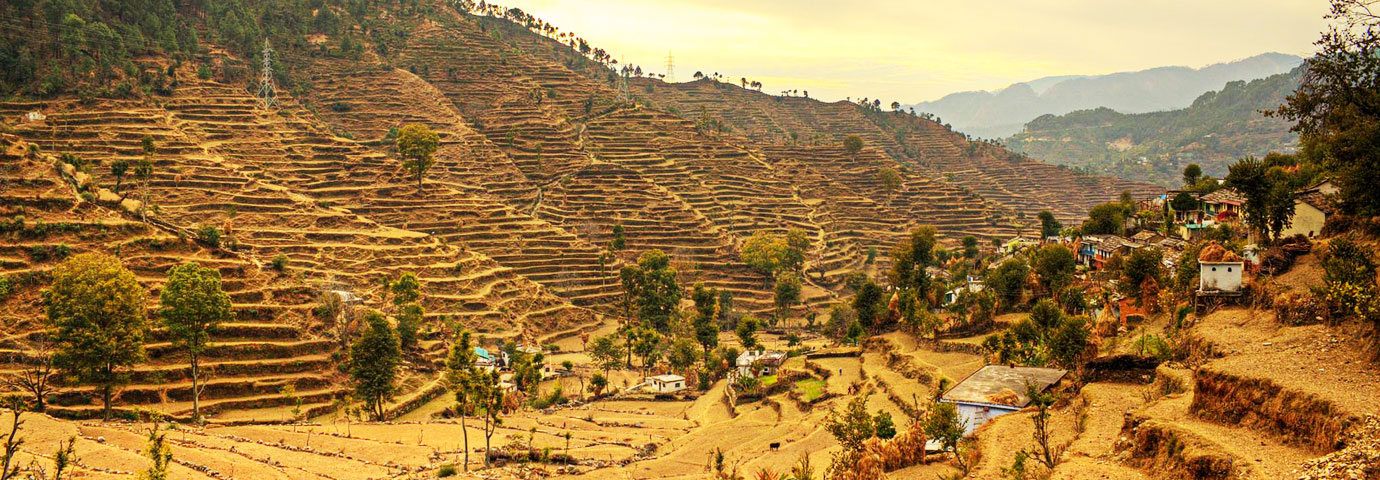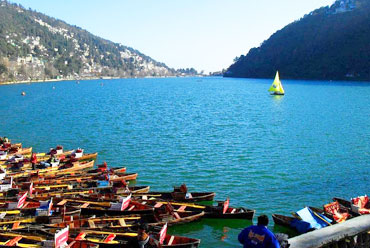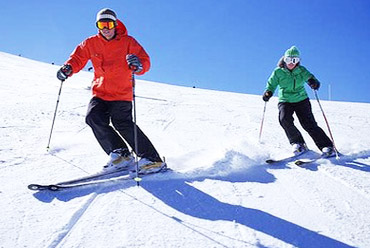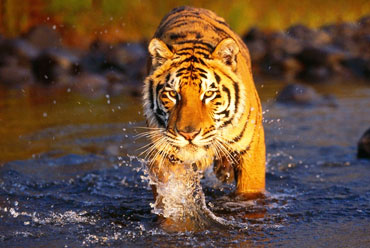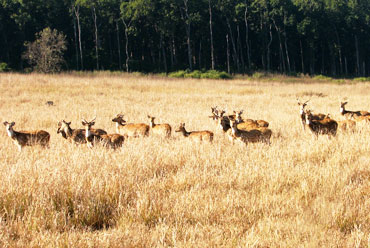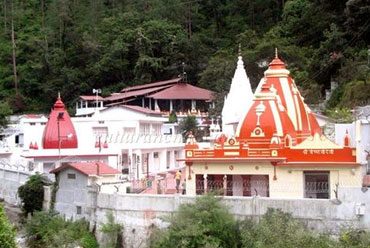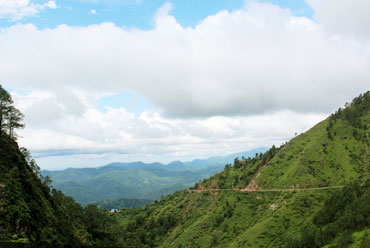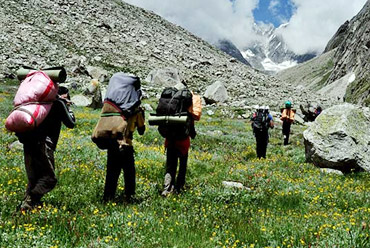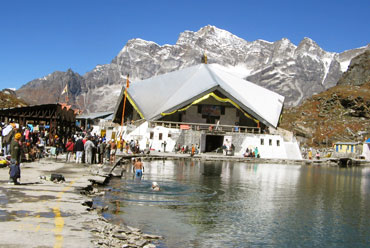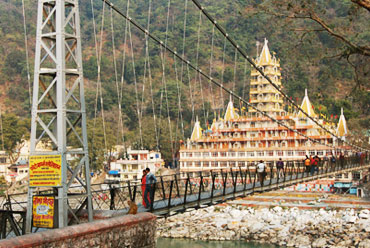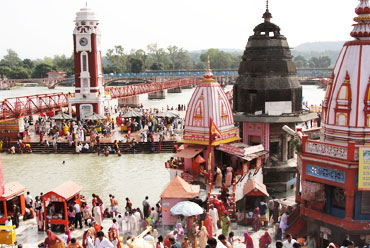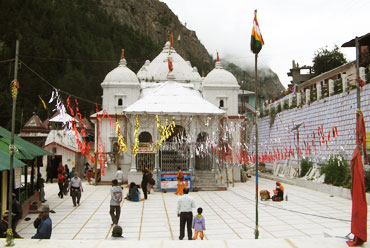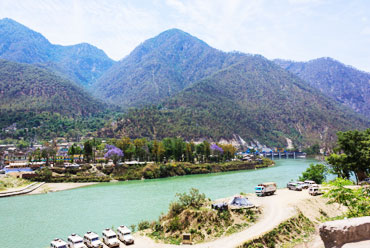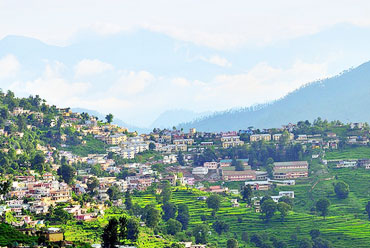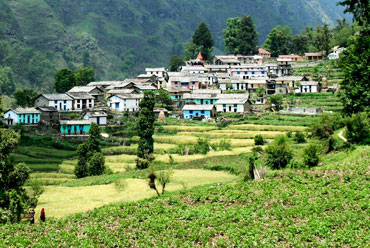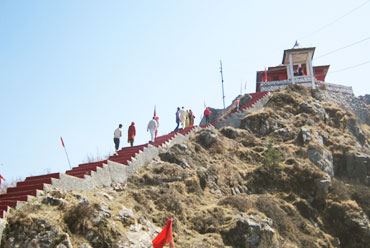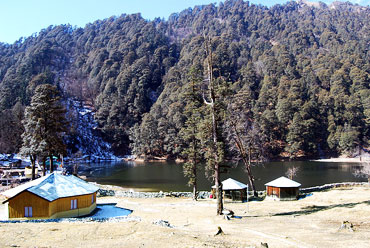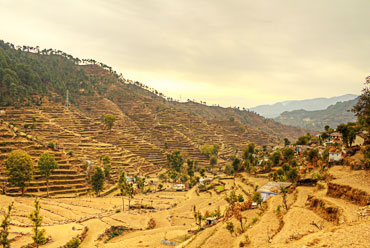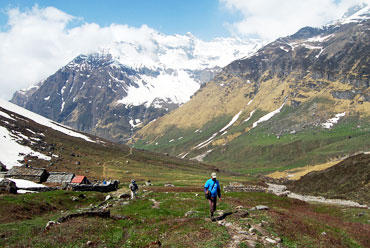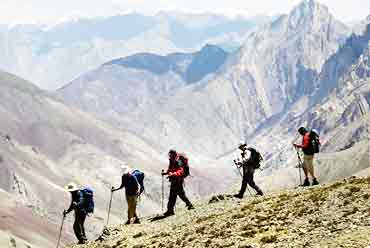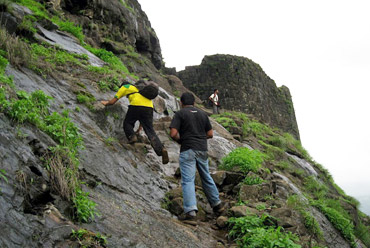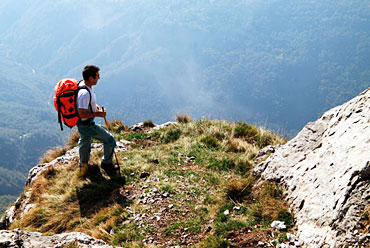In April every year the mountain fairies take up their abode in this valley lying high in the Himalayan ranges of Garhwal, and enter into a conspiracy with Nature. It is an enchanted valley, say the locals. Ringed in by snowy, cloud bedecked mountain summits standing sharply against the blue sky, the waterfalls flashing white against the mountainsides, nothing is more striking than the valley's absolute bloom of stunning perfection. On what is a lifeless, frozen wasteland of snow for most of the year, a multi-hued, fragrant, six miles long carpet of exotic flowers unrolls itself. As far as the eye can see, down the length of the valley, up the lower mountain slopes, there are flowers and flowers, and still more flowers. More than a thousand Himalayan varieties of flowers, ferns and herbs are massed in the valley in all their frail beauty and scented sweetness.
In the background of the valley, at 12,900 feet, is the Lari Bank glacier. Beyond lie perennial snowfields. The sparkling, snow-fed Pushpawati Ganga (River of Flowers) which runs through the entire length of the six-mile long, one and a half mile wide valley. From mid-July till the end of August, the valley with its dazzling assembly of flowers plays host to gorgeous butterflies and dainty flying creatures by day and to millions of glow worms by night. Through the sunny hours, the flowers lean over gracefully to soften the edges of tiny melt water streams which cut through the valley while beyond, against a background of dark purple clouds, the mountains stand more exquisite than ever. In the last hour, before daylight dies, the gray mist steals in over the valley from the glacier end, while the mountains around are aglow, suffused with magic light. The dusk shuts out the flowers. Then, goes the local legend, the fairy folk with millions of glowworm lamps hover over the flowers, tending them.
In 1931, Frank Smythe, a mountaineer, lost his way and chanced upon this valley with its colorful fairyland of flowers. Entranced, he named it the Valley of Flowers. Today, for a few precious weeks every year, the Valley of Flowers, its glory and mysterious beauty unspoilt, never fails to send out its soft appealing call.
Best Time To Visit
July to September - it is the only time when the flowers are in bloom.
Tourists Attractions
For those who respond to the valley's magic call, the journey to see the most beautiful gathering of flowers in the world means heading by road or rail, for Rishikesh. From this town of sages lying in the Himalayan foothills on the banks of the Ganga begins a 170 kilometer winding drive on which picturesque mountain villages and foaming, holy rivers provide good company all the way up to Govindghat at 5,487 feet. Porters, horses, dandies (palanquins) and kandis (baskets on coolies backs) await the traveler at Govindghat, which marks the beginning of a steep 12-mile trek to the famed valley. Crossing the surging Alaknanda River on a suspension bridge, travelers take to the mountain path, which climbs, for close to nine hours, through the hamlets of Pulna and Bhyundar to the last resting place at Ghangaria, 9,147 feet above sea level. Rest houses, tented accommodation, and a gurdwara (Sikh rest house for pilgrims) provide a comfortable night halt. A stiff three miles away - three miles in which you ascend 5,000 feet, atop a mountain is the glacial lake of Hemkund - the highest Sikh pilgrimage point at 14,500 feet. Three miles of gentler climbing in the other direction lies the Valley of Flowers at 10,800 feet.
To see the valley in all its radiance one must start from Ghangaria at dawn, before the sun has climbed the mountain crags. By the time one nears the entrance of the valley, the mist rises high with the warmth of the rising sun and drifts away in wreaths. Below lie the freshly awakened, still dewy flowers - a miracle revealed. A subtle air of leisure and repose, a romantic indefinable charm pervades the Valley of Flowers. To visitors poignant is the realization that the valley too has but a brief spring into which is crowded all the flowering glory of the year. For a few days longer, the flowers in the valley will be at their brightest. Then, as September advances, their petals begin to fall. Soon, the smiling flowers and dancing butterflies will be dead and gone. The mountain fairies depart with their glow worm lamps from the Fairy Land known to mankind as the Valley of Flowers and the magical carpet of flowers disappears as swiftly as it was unrolled in July. Returning from Hemkund and the Valley of Flowers, it is difficult to resist halting at ancient Joshimath, turning off the pilgrimage route and driving or trekking upto the dizzy heights of Auli - India's newest ski resort.
How To Reach
By Rail - The nearest railhead is at Rishikesh, 170 kilometers from the Valley of Flowers.
By Road - From Rishikesh, there is a good road up to Govindghat. The Garhwal Mandal Vikas Nigam runs conducted tours (duration: 7 days) by luxury coach to Hemkund and the Valley of Flowers.
By Foot - From Govindghat, it is approximately a nine-hour trek to Ghangaria, where one usually halts for the night. From Ghangaria, it is five kilometers along glacial drifts and a gently ascending path, which levels out near the Valley of Flowers. It is a stiff climb to Hemkund, which is also five kilometers away from Ghangaria.

